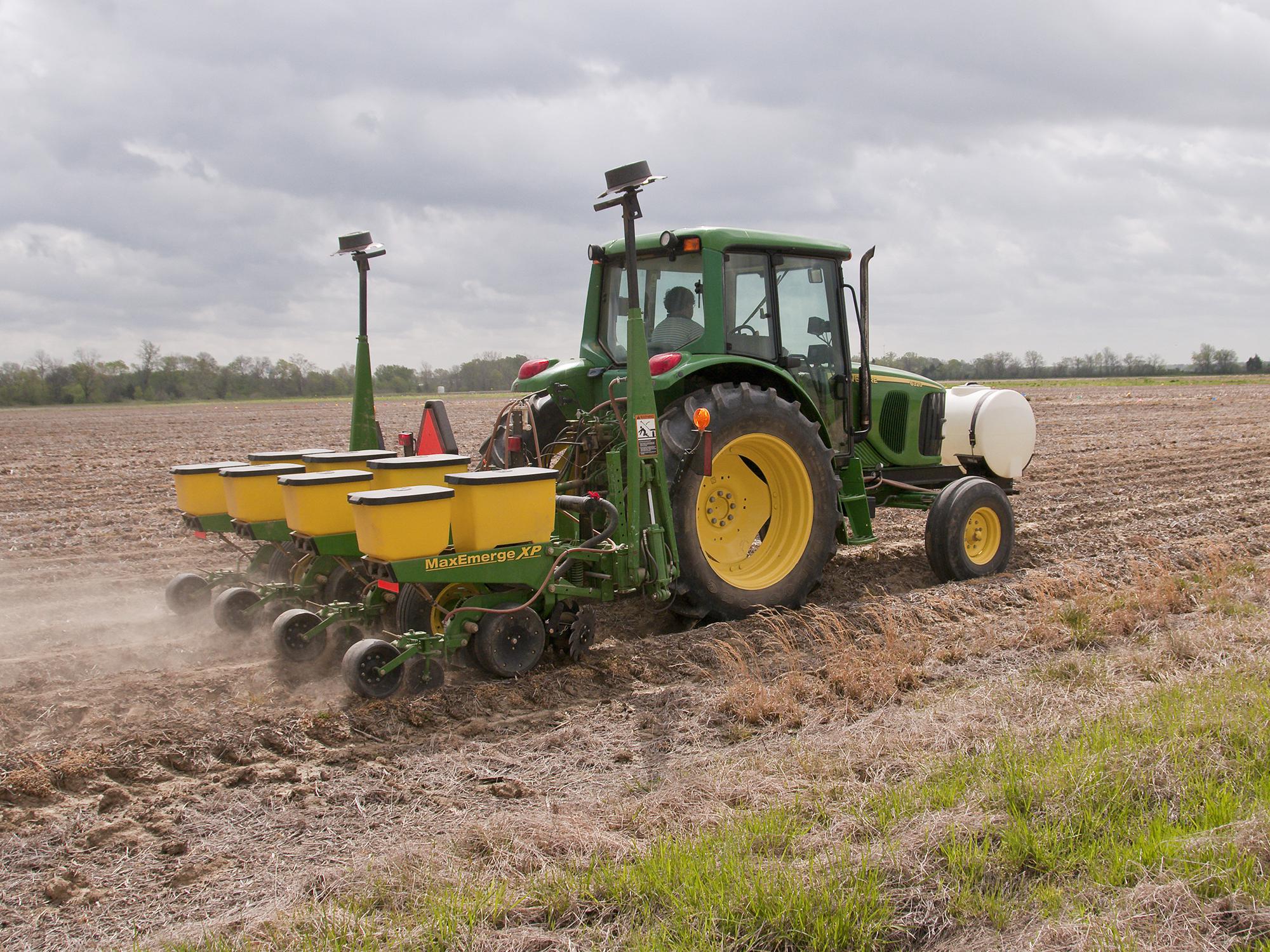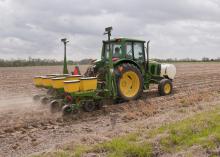Information Possibly Outdated
The information presented on this page was originally released on April 17, 2015. It may not be outdated, but please search our site for more current information. If you plan to quote or reference this information in a publication, please check with the Extension specialist or author before proceeding.
Temperature, moisture determine planting time
STARKVILLE, Miss. -- Seeing planters in the field is an expected part of spring in rural areas, but a lot of effort goes into making sure they run at the right time.
Planting season in Mississippi begins with corn in late February to early March and often runs into July as the last of the soybeans are planted after wheat harvest. The long planting window allows producers the opportunity to get a crop in the ground even when the weather is not ideal at typical peak planting times.
Larry Oldham, Extension soil specialist, said ideal planting dates reflect the time soil temperatures typically reach the levels needed for seed germination.
“Cool, wet conditions affect the soil physically,” Oldham said. “Soil absorbs and stores heat, and it must be warm enough for seed germination.”
Clay soils store more water and are slow to warm up. Sandy, lighter soils dry out faster and are typically the first ones planted in the spring.
“While temperature is an important component of seeds’ ability to germinate, if the ground is too wet, farmers simply can’t get machinery in the fields for planting,” Oldham said. “You need moisture to subside so you can get into the field without adverse effects like rutting or compaction.”
On April 13, U.S. Department of Agriculture estimates showed that Mississippi row crops were dealing with planting challenges because of late winter and spring rains. Corn is the most pressing crop, and 62 percent was planted, compared with a five-year average of 70 percent planted by this point.
Rice had the next highest percentage planted, with 29 percent in the ground. Both rice and soybeans, with 22 percent planted, were well ahead of their five-year average planting percentages. Cotton farmers had barely begun to break ground by mid-April, which is normal.
While some crops have a narrow planting window, soybeans can tolerate a wide variety of conditions Mississippi. Trent Irby, soybean specialist with the Mississippi State University Extension Service, said the ideal soybean planting window is early, typically during mid- to late April in Mississippi.
“Growers can still make a crop when planting is pushed into June and early July where wheat has been harvested,” Irby said.
He said weather is the main factor that may limit planting progress throughout the optimum planting window.
“Other factors would be the additional crops that producers will need to plant during this time, as well as the need to space out planting so that all of the soybean crop doesn’t mature at the same time,” Irby said. “This may help producers better manage their harvest operations.”
Planting soybeans during the early planting window has become standard for many Mississippi producers.
“Our producers do a good job of targeting planting dates appropriately for their operations,” Irby said. “Even with weather delays, if we can catch windows where field conditions are favorable, lots of acres can be planted very fast with the equipment and technology available today.”
Soybean variety selection is also an important decision for growers. Part of a producer’s job is choosing the right variety for the soil type and planting window.
“Variety selection and planting date are equally important decisions,” he said. “Planting the right variety early will help maximize the yield potential for the crop.”







